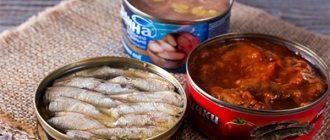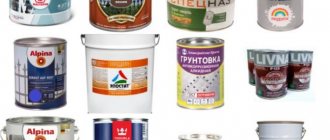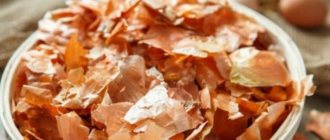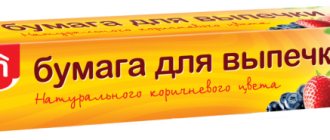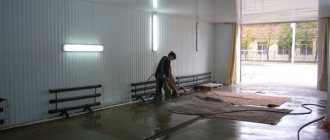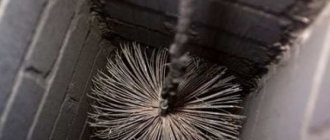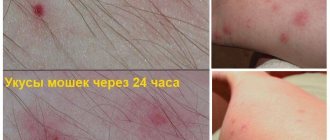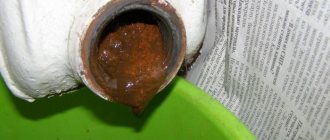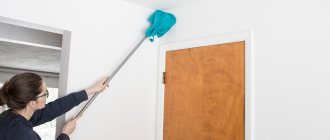Priming is a preparatory stage before painting metal surfaces, during which they are treated with a special composition that protects them from external influences and accelerates drying. However, the products to be painted are not always in ideal condition; in particular, they may be affected by corrosion.
In this case, a rust primer will help: this substance is applied to the part without preliminary cleaning. There are many types of these products, differing in composition, country of production, properties and price.
Types of primers for metal
Classification of such products is possible according to several criteria, including the form of release: paints, enamels and varnishes are distinguished. Based on the base substance, there are oil-based primers, water-based products and combined types. In addition, they are divided according to their properties into the following groups:
- Passivators. The composition of substances in this group includes salts of chromic acid, which protect the metal surface from oxidation. Typically, such primers are used for structures that are constantly in contact with water.
- Protectors. After application, a high-strength film appears on the metal being processed, as a result of which the coating becomes resistant to external influences, including contact with aggressive chemicals, salts, and acids.
- Insulators. They are based on lead white and prevent contact of the metal surface with water and oxygen. Such substances are usually used for structures used in the open air.
- Two-component based on phosphoric acid and passivators. They are versatile and suitable even for galvanized metal structures. The use of two-component converters makes it possible to reduce the consumption of paints and varnishes during subsequent processing, while the protective qualities are only enhanced.
- Inhibitors. After application, a protective coating is formed on the surface, which has the properties of a primer and enamel.
- Primers-converters for metal and rust for outdoor use. They are applied to products that have already suffered from corrosion stains; the orthophosphoric acid included in the composition promotes the formation of a film of iron phosphate. The affected areas undergo a partial restoration procedure.
What is oxygen primer for a car?
An acid-based primer is a special primer that comes in cans or containers with liquid. The main application is to improve adhesion and anti-corrosion protection.
The product is suitable for treating car bodies and is used as an initial layer.
It is impossible to apply a paint coating or epoxy composition over this product, since additional painting suppresses the acidic properties of the primer.
Acid or reactive primer - what is it, what is it for?
To understand whether it should be chosen among the variety of products on the market for creating an anti-corrosion layer, you need to understand what phosphating primer is. It can be sold in cylinders, as well as a liquid solution. The composition uses phosphate acid, zinc can be added, which helps to obtain, in addition to protection against rust formation, a coating with good adhesion. The use of phosphate primer for the initial treatment of car bodies is popular.
It is permissible to apply only as a first coat; it will not be possible to apply paints and varnishes on top; another primer is applied.
They obtain a protective layer against corrosion thanks to the chemical elements in the composition; the layer has mechanical protection, which distinguishes it from other primer solutions. You cannot paint epoxy compounds on top; their elements cover the acidity property. At the same time, acid primer has a number of positive properties:
- Resistance to high temperatures;
- Water resistant, the primer layer does not react with salt and water. Thanks to this, the beneficial properties of the coating are preserved in winter;
- Resistant to the negative effects of environmental factors, withstands the effects of gasoline, oils and other compounds;
- A metal surface treated with etching primer will be able to withstand various influences of natural factors, without the need for paint treatment;
- Fast drying, the next coat can be applied in five minutes.
The use of phosphate primer for the initial treatment of car bodies is popular.
Features of application
Etching primer is classified as a primary primer and is applied exclusively before painting the car body. Moreover, this must be done in a much thinner layer, unlike other types of automotive primers, which is associated with very good adhesive properties. The application of the product must be uniform so as not to leave any chance for corrosion.
Attention! Applying paint directly onto the acid primer layer is strictly prohibited. After drying, it must be covered with secondary soil.
Acid primer works well on galvanized, aluminum, stainless, chrome coatings, as well as on iron, welds and other surfaces. However, it is prohibited to apply a phosphating primer to materials with a polyester base. If this instruction is neglected, it will lead to complete destruction of the protective coating and all work will go down the drain.
Acid soil is a toxic and flammable material, so when working with it it is very important to adhere to basic safety rules - do not use the product near open fire, heating sources and at high temperatures, avoid contact with skin and mucous membranes, protect eyes and respiratory organs.
What is the peculiarity of the composition
An acid primer for metal is a reinforced product that covers the surfaces of the product and creates a moisture-resistant coating that also helps eliminate corrosion. To completely eliminate rusty areas, experts advise applying solutions in sufficient quantities, and when choosing, give preference to high-quality and well-known brands.
As mentioned earlier, application is carried out directly on the metal; aerosols are usually selected, with which the product is sprayed. The degreasing stage must first be carried out. After complete drying, an acrylic primer mixture is applied to obtain a leveling effect.
Application to a surface where old putty remains or a poorly cleaned product is not allowed, otherwise the layer may move away from the base too quickly.
The main difference from epoxy or acrylic primers is the creation of chemical protection rather than mechanical protection. Therefore, no products other than an insulating primer mixture are applied on top.
An acid primer for metal is a reinforced product that covers the surfaces of the product and creates a moisture-resistant coating that also helps eliminate corrosion.
Composition and technical characteristics
The main components that make up a rust primer:
- Solvent.
- A substance that serves as a binding element.
- Plasticizers to improve adhesion, effectiveness of metal surface protection, etc.
- Coloring pigment.
The characteristics of primers, including products applied to rust, depend on the components. The main qualities of such substances are conditional viscosity, the proportion of non-volatile ingredients, bending elasticity, impact resistance, hardness, adhesion in points, resistance to temperature changes.
Consumption per 1 m2
This indicator depends on the condition of the metal part to be processed, the number of corrosion spots, the depth of rust damage and other nuances. Average primer consumption for metal against rust:
- Primary priming, with the exception of compositions based on epoxy resin - 150-350 ml per square meter.
- Treatment with a rust primer based on epoxy or alkyd resin - 110-160 g per square.
- Using a universal composition – 80-140 ml per meter of surface.
Important! The indicated figures may vary, so when calculating the amount of substance for surface treatment, it is better to round the result up. Buying a rust primer with a reserve will allow you to avoid an unpleasant situation when there is not enough product in the midst of processing.
Methods for removing rusty deposits on a car
At the first stage, you need to mechanically clean off the damaged areas of the body.
Before removing any corrosion that has appeared on the car parts, you need to thoroughly rinse the affected area. Washing will help identify all damage and assess its size and depth of penetration.
There are two ways to get rid of rust on a car: physically remove all formed oxides or treat them using chemical converters. In practice, it is rarely possible to use only one method; usually it is necessary to combine them.
When mechanically removing rust from car parts, it is necessary to treat the damaged areas until clean metal appears. To completely remove all traces of corrosion, some of the healthy material must be removed. This can be done safely on parts of the chassis or the underbody of the car.
The use of chemistry allows you to do without physical effort. Some reagents attack rust in such a way that it can then be easily wiped off. There are products that convert metal oxides into other chemical compounds. For example, phosphoric acid applied to a rust-damaged area forms iron phosphate, which provides additional protection.
To completely remove rust from machine parts and prepare them for painting, you must perform the following steps:
- clean the base layer mechanically;
- treat the remaining rust with a chemical reagent;
- degrease the cleaned surface;
- fill up exposed cavities and dents;
- apply an anti-corrosion layer;
- prime the entire surface;
- smooth out uneven ground with fine-grained sandpaper.
The disadvantage of chemicals is that they are not able to penetrate to great depths. With their help you can get rid of a layer of rust up to 1 mm. But they are indispensable where it is difficult or impossible to reach with a mechanical tool. These are the internal cavities of the doors, part of the wing area from the inside.
Operating principle
The anti-corrosion effect of such products is achieved due to the fact that they contain a rust converter; as a rule, this is orthophosphoric acid. When processed, it acts on corrosive stains, turning them into a non-oxidizing substance. After this, a film is formed on the rusty metal, which has good adhesion parameters and the same thickness. As a result, no visible traces of rust remain on the surface, and the paint and varnish materials do not peel off after application.
The use of reactive primers is especially important if it is necessary to process joints, internal corners, and other hard-to-reach parts of the workpiece or structure. Regardless of the composition, such substances include active components that improve fluidity and make penetration much greater. However, modern formulations are effective against medium-sized rust spots. Products from this group can be used for processing galvanized steel and plain metal.
Important! The principle of action of corrosion primers is to transform stains and create a protective shell, however, if there is loose, crumbling rust, it will still have to be removed mechanically.
What else is important to know?
Even taking into account the high quality characteristics of this material, you should not apply it directly to a rusty surface, since the expected effect will not be achieved. The rust converter is not able to penetrate too deeply into the surface being treated, so areas heavily affected by rust cannot be completely removed. But preliminary cleaning of the treated surface can enhance the effect of primer-enamel on rust.
Primer enamel is suitable for painting metal structures located outdoors. It is best to treat them when they are still clean or slightly corroded. It is on such surfaces that anti-corrosion primers are most effective. If the surface of the product being processed has been exposed to weather conditions for too long without protection, then primer-enamel will clearly not be enough to treat it.
So there is no need to give a 100% guarantee for removing traces of rust from a metal surface treated with primer-enamel. It all depends on the degree of rust damage to the material being processed. But timely treatment at the early stage of corrosion with such a composition will give positive results. In other words, the smaller the area and degree of damage to the metal by rust, the easier it will be to prevent the development of corrosion on its surface.
Review of famous primers (2 videos)
Different primer mixtures for rust (20 photos)
Types of primers for rust
Classification of products is possible according to several criteria, from the type of metal and processing conditions to the period of hardening. The scope of application and effectiveness of such compositions depends on this.
By composition
Depending on the base, substances can be oily, aqueous or a combination. Based on their structure, they are divided into paints, enamels and varnishes. The composition also allows you to classify products according to additional criteria:
- Scope of use (indoors, outdoors).
- Hazard class (if the rust primer contains toxic substances, it is prohibited to use it on indoor surfaces).
- Substance consumption per meter of area.
By properties
According to the method of action, primers are classified as passivating, phosphating, isolates, converters and protectors. As for compositions intended to influence corrosion, the following varieties are distinguished:
- Primary composition. Its effect is the transformation of oxidized fragments into a protective shell.
- 2 in 1 – a product that combines the properties of the filler and the primary substance.
- The 3 in 1 rust primer is similar to the previous type, but also has the qualities of a final coating composition. It is its use that provides the greatest effect.
Preparing the body for priming
The slightest damage to the car body can destroy the metal. The primer is an intermediate link between the metal body and the final layer of paint on the surface of the vehicle. An incorrectly selected composition leads to sagging of the paint, so it is not worth saving on the purchase of such material. Preparing the car body for priming includes:
- cleaning the work surface;
- degreasing the material for priming;
- preparation of personal protective equipment for working with acid primer.
If you apply a layer using an aerosol in a can, the coating will be more even than if you do it with a brush. The acid layer is applied only after complete degreasing, checked with a clean cloth.
In addition, you need to prepare everything necessary for applying the primer:
- aerosol can for applying primer;
- spray gun;
- brush;
- rubber gloves and respirator;
- special clothing and shoes.
Acid Primer Application Methods
This composition can be applied in the following ways:
- using a brush;
- aerosol spray method;
- dip the metal into the primer solution;
- electrodeposition;
- spraying using electricity.
The method of dipping into primer is applicable only in factory conditions. When working with acidic primers, precautions must be taken to avoid poisoning by chemical components. This primer is applied before painting the car body. Grinding may be expected in the composition, but it may also be non-grinding.
The result of the work when applying primer depends entirely on the skill of the performer. A protective layer of acid primer applied to a metal surface will reliably protect it from rust.
The acidic material contains polyvinyl-butylene, which protects the metal from corrosion. The composition can be applied to the following metal surfaces:
- aluminum;
- made of chromed steel;
- galvanized steel;
- stainless steel;
- steel.
Polyester-based materials should not be applied to an acid base. Acid is toxic, therefore, when spraying the spray, you must use protective equipment. Just an hour after applying the acid primer, you can begin the final treatment.
Effect of anti-corrosion primer
After application, the primer begins to convert the rust into a compound that is not able to oxidize, and a durable film appears on the surface. If the corrosion stain is too thick, first carry out cleaning, removing the most fragile layers, otherwise the quality of the coating will be low.
If a primer for metal and rust is used for external work, then the treatment can be carried out regardless of the level of atmospheric humidity and temperature. When using the composition for internal application, make sure that the working conditions are suitable. The duration of soil hardening depends on the thermal regime and the individual properties of the substance itself.
Corrosion product modifiers
Today on sale you can find many metal primers for metal against rust, which differ in the active substance, reaction speed and other properties. The most popular formulations are those based on phosphoric acids; stores also offer products based on tannin and other components. Classification of modifiers:
- Stabilizers. They transform iron oxide hydrates, which have an unstable structure, into more resistant compounds, for example, magnetite.
- Converters. As a result of the chemical reaction of the product with corrosion stains, slightly soluble salts appear on the surface. These include all iron, zinc, barium and manganese phosphates.
- Penetration primers for rust. They are characterized by high penetrating properties; after impregnation, the composition compacts the corrosive product, making it resistant to external influences.
- Modifiers that create a solid base: it serves for subsequent treatment of the metal surface with paint or varnish.
Where should a modifier primer not be used?
In some cases, it is not advisable to use compositions that form a base on metal with rust stains:
- Corrosion spots occupy more than a third of the entire surface.
- The scale has a thick layer with a loose texture.
- The rust spots are through, in this case the use of a primer is ineffective: first you need to remove the holes.
Most often, such problems appear in structures that are in constant contact with a damp environment. The surface rusts faster if it has not been protected with special means, and after a few days such a product begins to become stained. The longer the surface comes into contact with water, the more damaged it will be, and accordingly, the effectiveness of using primers is greatly reduced.
What's included
The anti-corrosion primer contains several active components. Among them:
- Phosphoric acid. Used as a corrosion converter and removes large areas of rust.
- Polyvinyl butyral. Allows you to obtain a special film with high adhesive properties.
- Zinc. It is used for mechanical protection of metal surfaces and creates a thin anti-corrosion layer.
What is acidic soil made of?
Acid soil is a transparent composition with a shade of gray or light green.
As already mentioned, the composition of acid soils may differ from each other, depending on the manufacturer and have different proportions.
The base polymer is usually polyvinyl butyral; the composition also contains phosphoric (orthophosphoric) acid (small amount), isopropyl alcohol, zinc chromate (or zinc phosphate), talc (about 2%) and other additives.
Zinc chromate is a component that increases the corrosion protection of metal. In an etching primer, phosphoric acid reacts with the metal, while zinc chromate does not react chemically with the metal. In fact, zinc chromate can be added to primers with various polymers, such as epoxy, polyurethane. It adds anti-corrosion properties to the product to which it is added.
In some countries, the chemical reagent zinc chromate is banned due to its high toxicity, so the soil contains other components of a similar effect.
Primer 3 in 1 for rust
One of the most popular options is the 3 in 1 primer composition: it is a product that performs the functions of a primary, secondary primer and enamel. Such substances are suitable for quick metal processing; when using them, there is no need to additionally treat the surface with paints and varnishes.
Important! If a metal part is treated with a 3 in 1 primer not in stages, but in one layer, the rust protection will last a maximum of 5 years. After this, the coating will have to be renewed.
For such products, a nozzle up to 2 mm in size is required; a diluent is added to the composition up to 5% of the total volume to provide it with the required viscosity. Application is carried out in the same way as for the primary rust primer, however, the thickness of each layer should be 40 microns. It is enough to apply 2-3 layers, each should dry for 60-80 minutes. Complete drying takes about 4 hours.
Which primer should I choose?
When choosing an anti-corrosion primer, you need to decide on the following indicators.
- Where will the soil be used - for external or internal work? For interior work, quick-drying compounds that do not contain toxic substances are selected.
- The aggressiveness of the environment in which the processed product will be operated. For aggressive environments, it is better to choose an insulating type of soil with good hiding power and forming a dense film.
- Desired service life without additional treatments. If you need a steel product to last for many years, then it is better to use a primary primer. If the main goal is to reduce labor costs, you can purchase 3-in-1 enamel primer.
Priming technique
When using, it is necessary to take into account the peculiarities of applying such products. The rust primer is applied as follows:
- The surface is cleaned from loose corrosion, dirt and dust. If necessary, it is degreased and washed.
- Apply a thin layer of primer; it is important that it has the same thickness over the entire area. For processing, use a brush, roller or spray gun; you can also use products available in aerosol form. The first layer of rust primer is applied as thinly as possible. In subsequent stages, the substance can be applied thicker.
- Allow the finishing coat to dry, and then, if necessary, treat the metal part with paint or varnish.
The drying time of individual layers varies depending on the air temperature indoors or outdoors, humidity, and other factors.
Applying rust converters before painting a car
When using a rust converter, it is important to strictly follow the instructions on the package. The general algorithm for applying products includes several stages:
- Carefully remove dirt, paint and loose rust from the metal surface. To do this you will need a metal brush or spatula.
- Apply anti-rust primer for cars from a can according to the manufacturer's instructions. Aerosols are sprayed in a thin, uniform layer. Apply liquids with a brush or rag. Be sure to treat the entire affected surface without missing a single millimeter.
- Leave the treated surface for 12-24 hours so that the composition enters into a chemical reaction with iron oxides. During this time, it is better to place the car in a dry, closed hangar or garage. During this time, a protective layer forms on the metal surface.
- Apply to the place where the rust was an aerosol primer for cars that is suitable in type and composition for the converter. Let it dry completely.
Next, the car can be puttied and painted.
Review of popular manufacturers
The most popular rust primers are from the following companies:
- EVA. This brand produces converters, the components of which must be mixed in proportions of 3 to 100 before application.
- Stainless steel primer. This is an alkyd composition that is suitable for application to corrosive spots, provides increased moisture resistance and insulates the surface well.
- VD. The rust primer forms a dense film and has a matte surface.
- Bark beetle This manufacturer produces effective 3-in-1 products that are easy to use and relatively inexpensive.
There are other manufacturers offering products that differ in composition, price and properties. The choice depends on the preferences of the buyer and the parameters of the part to be processed.
Domestic primers modifiers
Today, stores offer more than 50 types of modifier primers produced by domestic companies. You can find even more imported formulations.
Among all this diversity, we can highlight the following compositions, which over the years of practical use have shown their best performance.
Primer with corrosion converter EVA-0112
A system containing two base components, offered in separate packages - 85% phosphoric acid and a base. Before application, these components are mixed in a ratio of 3:100. The finished composition should be used within the next 24 hours. The maximum result from using this primer is guaranteed only if epoxy resin paint is applied to this coating.
Rust modifier primer EVA-01-GISI
Another two-pack system that uses 70% phosphoric acid and base. Before surface treatment, the substances are mixed in a ratio of 5-7:100. The base is polyvinyl acetate dispersion with a surfactant additive.
Rust modifier primer EP-0180
Here the basic components are the base and hardener. The primer composition begins to be prepared half an hour before application, for which the ingredients provided by this system are mixed in a ratio of 7.5:100. The finished composition remains suitable for use for 8 hours . It is suitable for treating surfaces that have been corroded unevenly. After applying this paint-primer to metal, a durable film appears that can cope with the role of a full-fledged protective coating that already has a red-brown color.
Nerzhamet-Grunt
Anti-corrosion primer based on a corrosion inhibitor and aluminum filler. They are used to treat not only structures with rust products, but also clean metal surfaces. The special composition allows it to be applied directly to traces of rust. The primer has high moisture resistance and excellent insulating ability. Can replace the topcoat; after application it forms a semi-matte film.
High-quality primers for plastic surfaces
For high-quality priming of plastic parts, their preliminary preparation is important, which consists of heating or exposing the polypropylene to an open flame (evaporation technology), subsequent matting and removal of fats and resins. The steady popularity of NOVOL, Reoflex and Liqui Moly in this area wavered after the appearance on the market of new products from the German Spies Hecker and the Japanese Kansai.
- Acid primer for cars
- Which brake fluid to choose
- The best way to treat the underbody of a car against corrosion with your own hands
- Which hard wax for cars is better?
Recommended sealer primers
A group of sealers (insulators) is designed to eliminate the possibility of contact of conflicting materials. The most effective for this purpose are viscous epoxies, which create a dense protective layer.
Acrylic primers designed for wet-on-wet work also have insulating properties. They are used either as a direct substrate for painting, or with the subsequent addition of filler.
Briefly about the main thing
An acid primer has a special purpose, which differs significantly from the tasks of acrylic and epoxy primers. It is used exclusively for primary processing, which significantly enhances the protection of metal from rust. Due to chemical protection, the paintwork is used for a long time without the formation of swelling, cracks and other defects.
Thanks to a layer of acid primer, metal surfaces, be it a car, a fence or a galvanized roof, will not be affected by rain, snow or other negative influences. For a long time they will have an attractive appearance and please the eye. The main thing is to understand the types of primer, choose the right one and apply it correctly to the surface.
